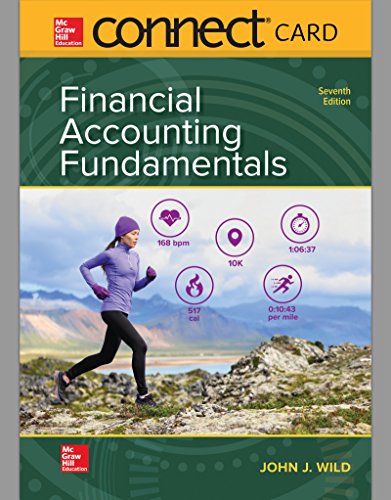
1.
Compute trend percent for fiscal years 2013, 2014, and 2015 for net sales, cost of sales, operating income, other income (expense) net, provision for income tax, and net income.
2.
Compute common-size percent for fiscal years 2014 and 2015 for the following categories of assets: (a) total current assets, (b) property, plant and equipment, net; and (c)
3.
Comment on any notable changes across the years for the income statement trends computed in requirement 1 and the
4(1)
Compute trend percent for fiscal years 2013, 2014, and 2015 for net sales, cost of sales, operating income, other income (expense) net, provision for income tax, and net income.
4(2)
Compute common-size percent for fiscal years 2015 and 2016 for the following categories of assets: (a) total current assets, (b) property, plant and equipment, net; and (c) goodwill plus acquired intangible assets, net.
4(3)
Comment on any notable changes across the years for the income statement trends computed in requirement 1 and the balance sheet percent computed in requirement 2.
Want to see the full answer?
Check out a sample textbook solution
Chapter 13 Solutions
Connect Access Card For Financial Accounting Fundamentals
- Can you help me solve this general accounting question using the correct accounting procedures?arrow_forwardI need help solving this financial accounting question with the proper methodology.arrow_forwardCan you provide the valid approach to solving this financial accounting question with suitable standards?arrow_forward
- I need help finding the accurate solution to this general accounting problem with valid methods.arrow_forwardI need assistance with this general accounting question using appropriate principles.arrow_forwardCan you solve this general accounting problem using accurate calculation methods?arrow_forward
- The monthly fee (in dollars) for a streaming service at Madison Entertainment is a linear function of the number of devices registered. The monthly fee for 3 devices is $19.95 and the monthly fee for 6 devices is $31.95. What is the monthly fee for 4 devices?arrow_forwardI need the correct answer to this general accounting problem using the standard accounting approach.arrow_forwardTorrance Garments Ltd manufactures and sells men’s trousers. Each trouser requires 2.0 hours of direct labor. The average hourly cost of direct labor is $13.50. What is the cost of direct labor in November if the company plans to produce 9,200 trousers?arrow_forward

 AccountingAccountingISBN:9781337272094Author:WARREN, Carl S., Reeve, James M., Duchac, Jonathan E.Publisher:Cengage Learning,
AccountingAccountingISBN:9781337272094Author:WARREN, Carl S., Reeve, James M., Duchac, Jonathan E.Publisher:Cengage Learning, Accounting Information SystemsAccountingISBN:9781337619202Author:Hall, James A.Publisher:Cengage Learning,
Accounting Information SystemsAccountingISBN:9781337619202Author:Hall, James A.Publisher:Cengage Learning, Horngren's Cost Accounting: A Managerial Emphasis...AccountingISBN:9780134475585Author:Srikant M. Datar, Madhav V. RajanPublisher:PEARSON
Horngren's Cost Accounting: A Managerial Emphasis...AccountingISBN:9780134475585Author:Srikant M. Datar, Madhav V. RajanPublisher:PEARSON Intermediate AccountingAccountingISBN:9781259722660Author:J. David Spiceland, Mark W. Nelson, Wayne M ThomasPublisher:McGraw-Hill Education
Intermediate AccountingAccountingISBN:9781259722660Author:J. David Spiceland, Mark W. Nelson, Wayne M ThomasPublisher:McGraw-Hill Education Financial and Managerial AccountingAccountingISBN:9781259726705Author:John J Wild, Ken W. Shaw, Barbara Chiappetta Fundamental Accounting PrinciplesPublisher:McGraw-Hill Education
Financial and Managerial AccountingAccountingISBN:9781259726705Author:John J Wild, Ken W. Shaw, Barbara Chiappetta Fundamental Accounting PrinciplesPublisher:McGraw-Hill Education





